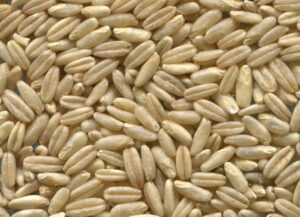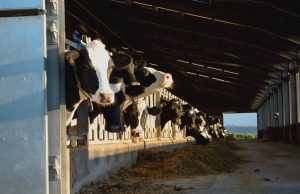Ishaya U. Gadzama & Fernando Diaz
Oat grain has been proposed as a cost-effective source of energy for dairy cows. Oats have a high proportion of hull, accounting for up to 25% of the whole oat weight. This high content of fiber protecting the groat reduces its energy content compared with other cereals such as barley or wheat. Thus, several processing methods can be used to break the hull and improve grain digestibility.
In a recent study, Tosta et al. (2019) assessed the performance of dairy cows fed diets containing either dry-rolled, steam-flaked or pelleted oat grains as the main source of dietary carbohydrates. The study was conducted at the Rayner Dairy Teaching and Research Facility, University of Saskatchewan, Saskatoon, Canada. Oat grains were either dry-rolled in a roller grinder to a final processing index of 50.9; steam-flaked under atmospheric pressure for 25 minutes at approximately 100°C or pelleted at 62°C in a pellet mill with a die diameter and hole area of 350 mm and 4 mm, respectively (pellet durability index was 66%).
Cows were fed diets containing 54% forage (36.8% barley silage and 17.3% alfalfa hay); and 46% concentrate. Inclusion level of rolled, flaked, or pelleted oat grains was 15.4% in a dry matter (DM) basis. The results of the study were reported in Journal of Dairy Science and the main findings are summarized as follow:
Dry matter intake was higher (31.6 kg/d) in cows fed pelleted oats as compared with cows fed rolled oats (28.2 kg/d). On the other hand, cows fed rolled oats produced more milk (49.2 kg/day) than cows fed flaked or pelleted oats (46.9 kg/day). In addition, cows receiving the rolled oat diet showed better milk fat percentage (4.0%) than cows fed flake (3.69%) or pelleted oats (3.62%). Thus, feed efficiency, estimated as 3.5% fat-corrected-milk/DM intake, was greater in cows consuming the rolled oat diet (1.81) than in cows fed the flaked or pelleted oat-based diets (1.65).
There was no treatment difference in the ruminal concentration of total short-chain fatty acids (94.4 mM). However, ruminal acetate concentration was greater in cows fed rolled and flaked oat-based diets (58.9 mM) than in cows that received the pelleted oat-based diet (54.8 mM). Mean ruminal pH over a 24-hour period was unaffected by processing method (average: 6.16) but pH declined more quickly in the steam flaked and pelleted oat diets until 6 hours post-feeding. Oat processing method did not affect total-tract digestibility of DM, organic matter, protein and starch; however, digestibility of neutral detergent fiber was slightly lower in the rolled oat diet.
In conclusion, the results of this study show that dry-rolling oats is the best processing method for treating oat grains to be included in lactating cow diets.
Reference
Tosta, M.R., Prates, L.L., Christensen, D.A. and Yu, P. 2019. Effects of Processing Methods (Rolling vs. Pelleting vs. Steam – Flaking) of Cool-Season Adapted Oats on Dairy Cattle Production Performance and Metabolic Characteristics Compared with Barley. Journal of Dairy Science. 102: 10916 – 10924.
© 2019 Dairy Knowledge Center, LLC. All Rights Reserved.











